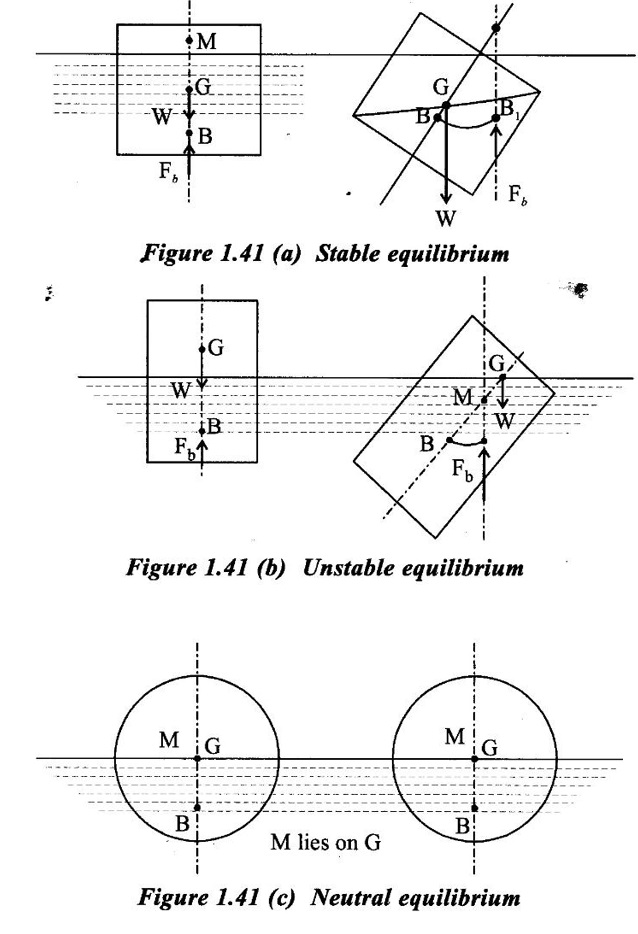A body is said to be in a state of stable equilibrium if a small angular displacement of the body sets a couple that tends to oppose the angular displacement of the body, position.
STABILITY OF THE FLOATING BODY
(i) Stable Equilibrium:
A body is said to be in a state of stable equilibrium if a small angular displacement of the body sets a couple that tends to oppose the angular displacement of the body, position. In this case the M (Meta-centre) always remains above G (Centre of gravity of the body).
(ii) Unstable Equilibrium:
A body is said to be in a state of unstable equilibrium if a small angular displacement of the body sets a couple that further tends to increase the angular displacement of the body and will not allow the body to restore its original position. In this case M remains below G.
(iii) Neutral Equilibrium:
A body is said to be in neutral equilibrium if the small angular displacement of the body sets-up no couple and then the body adopts the new position given to the body a remains an equilibrium. In this new position, w and Fb acts along the same line and no couple is formed. The example of this floating share.
The positions of the floating bodies in the liquid under above three mentioned conditions are as shown in figure 1.41.

No comments:
Post a Comment